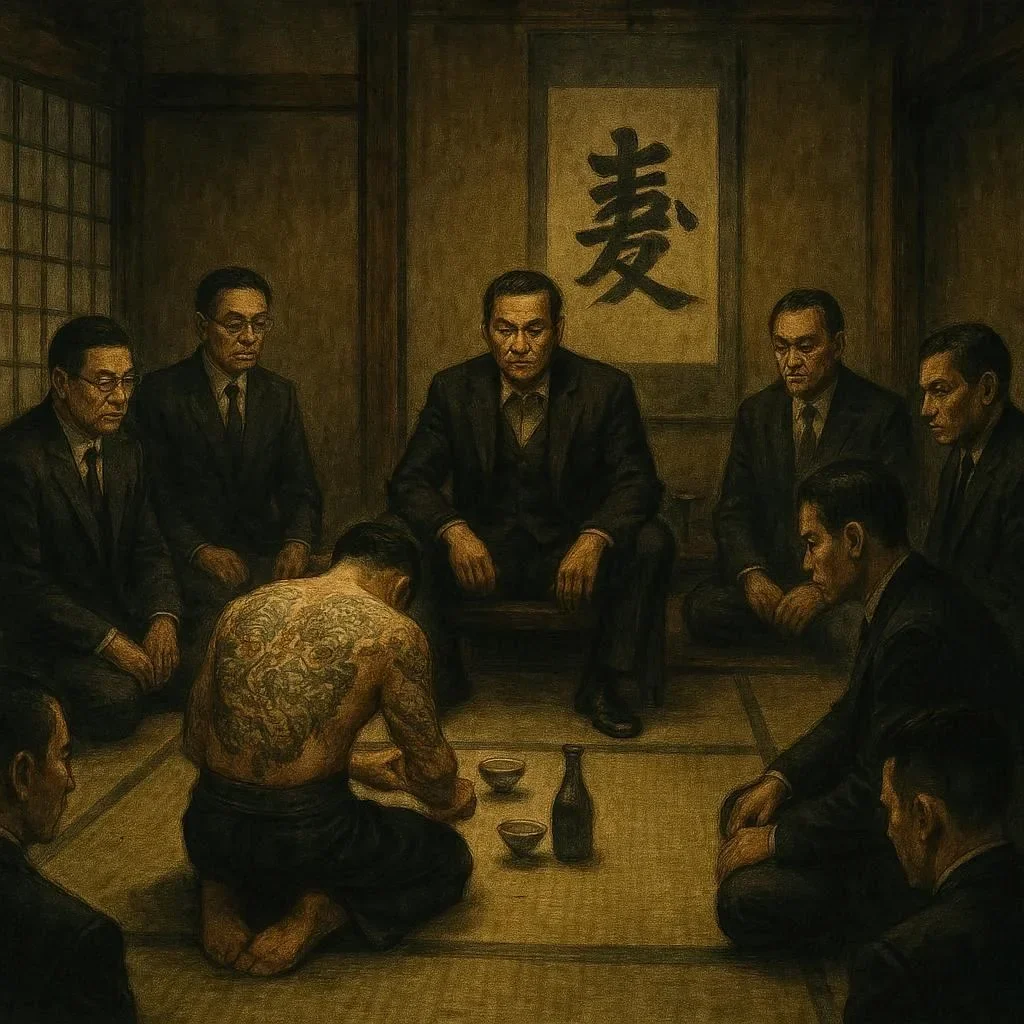508 views Life Inside the Syndicate: Rituals, Rules, and Respect
In the shadowed corridors of organized syndicates, a world operates beneath the flickering neon of the city’s underbelly. While often conflated with sheer criminality, a seasoned look unveils a surprisingly sophisticated social fabric. The Syndicate’s existence hinges on a tight combination of rituals, rules, and respect—a triad that preserves coherence, loyalty, and power. This piece pulls back the curtain on how these elements steer daily operations, govern member conduct, and shape an identity that commands fierce devotion.
The Foundations of Syndicate Culture
At its core, a Syndicate is more than a group of thieves; it’s a micro‑society with its own history, ideology, and governance. Rooted in centuries of clandestine trade and illicit enterprises, most modern syndicates trace back to early street gangs or organized crime families that capitalized on anonymity. Cultural motifs—such as the emphasis on collective honor over individual ambition—glean inspiration from family clans, mafia folklore, and even ancient guilds. These traditions set the tone for everything that follows, from the way new members are vetted to how disputes are settled without external law enforcement interference.
Core Values: Power, Profit, and Loyalty
Three pillars uphold syndicate operations: Power, Profit, and Loyalty. Power is not just dominance over territory; it is the credibility and deterrence that keep rivals at bay. Profit fuels the syndicate’s agenda—whether it’s narcotics, extortion, or cyber‑fraud—maintaining the economic engine. Loyalty, the most sacred currency, ensures that members stay in line, echoing the proverb “Blood is thicker than water.” The Syndicate sees future generations as extensions of the same legacy, meaning that betrayal is often met with a swift, unerring penalty.
The Grand Initiation Ritual
No one enters the syndicate without a ritualized initiation. The ceremony, quietly held in a dim warehouse or abandoned vault, begins with a cleanse—often a symbolic act of shedding past identities by burning or swallowing an object imprinted with a name. The novice is then presented with a blackened coin or a freshly minted contract, each etched in foreign numerals that represent the Syndicate’s secret algorithm. Finally, seasoned members recite ancient oaths in a low, rhythmic chant, binding the newcomer to an unbreakable code. The finished initiation sends a signal: the Syndicate now owns this individual, and they become a part of an extended family.
Daily Rituals that Keep the Engine Running
Beyond the initiation, daily rituals reverberate through the operational matrix. Every morning, a silent meeting—a circle of leaders and lieutenants—takes place over cold coffee and printed maps. In this gathering, territory boundaries, new intel, and risky assignments are circulated. Members then perform staggered watch shifts, which are less about vigilant patrol and more about psychological surveillance, testing each other’s vigilance within a predictable routine. During night cycles, a resource audit occurs where each crew member validates compliance with profit-sharing percentages and ensures that supplies—phones, covert tools, or muscle reserves—are stocked. These rituals bolster confidence, reduce conflict, and create a rhythm that members rely on to glide through a murky existence.
Quiet Codes of Communication
In a world obsessed with secrets, the Syndicate’s communication system is purposely coded yet conspicuously simple. Instead of encrypted tech, they use a set of hand signals, dire signified by a palm-to-lid handshake that indicates “contact” or “danger.” For long‑range contact, they send color‑coded envelopes across cities, each shade unlocked by a multi‑factor key that the guardian of the color is mandated to stay silent about. Even the phone line jacks are idiosyncratic: a spoken phrase at a predetermined time slots signals that a money‑line is active. The elegance of this system lies in its redundancy: if one node is jeopardized, another is ready.
Hierarchy and Rule Enforcement
The Syndicate’s hierarchy resembles an engineered organ system. At the apex stand the High Council, each member dignified by decades of endurance. The council presides over strategic decisions, territory negotiations, and settling criminal disputes. Below them sits the Aide‑de‑Chefs—lieutenants who manage specific districts or craft illicit artifacts. Lurking beneath lies the Trainee Cell—rookies performing menial tasks that keep them in line.
Rule enforcement hinges on a system of vigilance and retribution. Minor infractions—like breaching a shift or leaving evidence—result in “damages,” a punitive fine payable in cold assets or an extra stake in future profits. Serious breaches receive a formal execution of disgrace: a name is burned from the inner registry, a member is erased, and the world is warned. Yet, while the Council might appear inflexible, its decisions are usually backward‑compatible with long‑term stability, meaning that occasional leniency can be granted if a member proves indispensable.
Respect Rituals: Symbols, Agreements, and Heirs
Respect within the Syndicate arborizes three key rituals, each intentionally ceremonial. The first is the Symbolic Bow: a solemn acknowledgement bow taken before major decisions. It serves to collapse ego, signifying that the decision stands above personal bias. The second is the Legacy Pact, a written agreement with a one‑line clause that declares the transfer of knowledge down the hierarchy, ensuring continuity. This pact is signed in a room that has every family crest—a representation of a lineage that those who follow uphold. Finally, the third is the Heir Surrender, a drastic but infrequent ritual where a senior sponsor hands over a következő “family tree” within a private chasm. The handover is sealed with a cut‑off of a single hair strand, symbolizing the continuity of bloodline.
Perceptions from the Outside
For outsiders, syndicates represent the lore of fear, whispers, and the myths they spin. Media outlets rarely glimpse the sophisticated internal dance; they come only with headlines of violence, raids, and the slips of reviews. In fact, the most pervasive misconception is that syndicates are purely opportunistic. In reality, their internal structure is a calculated optimization of risk, reward, and reputation, carefully curated to maximize profits while keeping law‑enforcement at bay. The result? An invisible, yet functional, micro‑state could happily exist just beneath the social surface.
Modern Evolution in a Digital Era
The digital age has not rendered the Syndicate obsolete—it has simply refashioned its rituals. Where once a rope or a coin was emblematic, now a complex cryptographic chain replaces it. Re‑authorisation via a tamper‑evident blockchain becomes the new oath. Vigilance transforms into simultaneous data‑stream intercepts, and strategy planning transposes into algorithmic geographical zoning. Yet, underneath the memes of virtual takeover lie the same principles: rituals are still enacted, rules remain, and respect is still the glue. Creatively, digital gifts—such as encrypted quizzes or AI‑driven loyalty programs—now take the place of old‑school signals. The Syndicate’s key adaptability lies in its ability to integrate new tools while preserving hierarchical coherence.
Cross-Cultural Influence and Global Standards
Syndicates are global by nature. New members arrive from cultures as diverse as the Caribbean, Eastern Europe, or the Indus valley; each brings nuance to the mystique of membership. The Syndicate judiciously blends these spiritually infused ideas—like the Toki from Indonesia or the sanctions from Yakama—into its rulebook. This cross‑cultural plumbing essentially creates a toolbox that is both universally recognized and locally adaptable. The practice of cross‑cultural etiquette ensures that the Syndicate can traverse varied social stigmas, effectively remaining untouchable within jurisdictional boundaries.
A Takeaway: An Engine of Order Inside Chaos
Syndicates do more than simply thrive in shadows; they represent a self‑sustaining cognitive system. Rituals serve as anchor points, rules act as legal frameworks, and respect is the social lubricant. These three forces interoperate to avoid internal fragmentation while projecting power to outside forces. Whether you view the Syndicate with ire, a go‑to mastermind, or an academic phenomenon, the underlying structure—rooted in age‑old practices yet groomed by contemporary innovation—remains a testament to the human need for order amid turbulence.
So next time you hear about a Syndicate, remember: it is a culture that has mastered the pattern of rituals, the rhetoric of rules, and the language of respect—an ideological dance that sustains both the individual and the collective. Whether it’s the smoky initiation or the silent daily meetings, the Syndicate’s heartbeat stays true: the flame of tradition must be lit each day to keep the dynamic structure intact.






